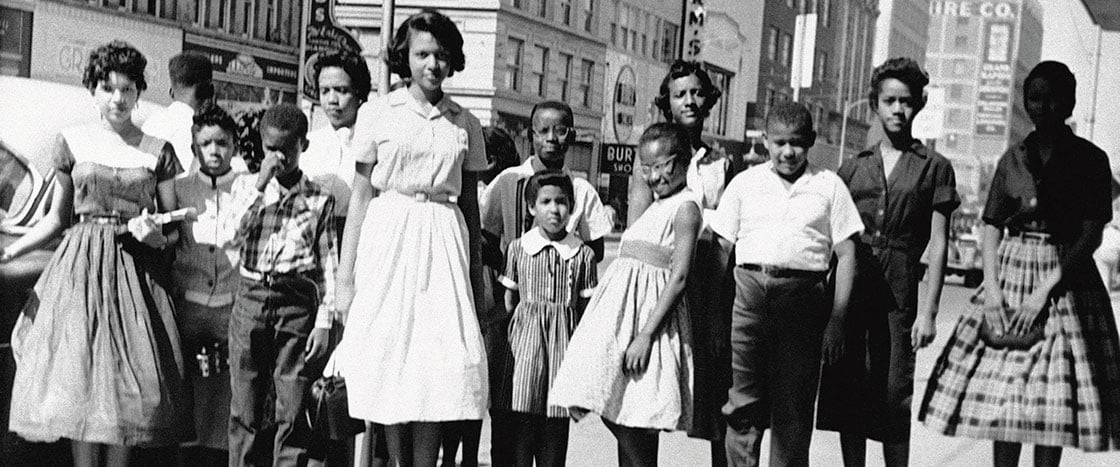SD3: The scene returns to Katz Drug Store.
SD1: Barbara leads the group to the lunch counter. The kids sit down on stools. The room falls silent.
Barbara: We’d like 13 Cokes, please.
Waitress 2 (scowling): You can have them to go.
Barbara: We’ll drink them here, please.
Waitress 2: This lunch counter is for whites only.
SD2: The kids don’t move. The manager comes over.
Manager: Get up. You can’t sit here.
SD3: The kids smile politely.
Manager (to Mrs. Luper): Why are you making trouble?
Mrs. Luper: It’s hot out. They just want Cokes.
Manager: If you don’t leave, I’ll call the police.
SD1: The kids remain seated.
SD2: The manager storms off. The white people at the counter get up, leaving their food unfinished. They glare at the kids.
Customer: You’ve got a lot of nerve.
SD3: One customer spits on Calvin.
SD1: Calvin clenches his jaw but doesn’t react.
SD2: Mrs. Luper hands Calvin a napkin.
Mrs. Luper: I’m proud of you, son.
SD3: The police arrive.
Manager: Officer, get them out of here! Who do they think they are?
Police Officer: They’re just sitting.
SD1: More customers gather to stare at the children. Reporters show up with cameras.
Manager (to the reporters): You get out! No publicity!
SD2: The crowd grows more hostile, hurling insults and threats at the kids.
Marilyn: They hate us so much.
Barbara: All we’re doing is asking for justice.
SD3: The kids stay seated until the store closes.
Calvin: What happens now?
Barbara: We come back tomorrow.

